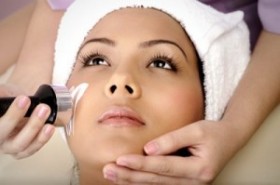Restorative Treatment for Scars
 The skin is the largest organ on the body, and if damaged it can be terribly unsightly and difficult to cover up. Burns, scrapes, cuts, and piercings are just a few of the ways skin can become damaged during everyday life. Thankfully, there are many ways to reduce the size and appearance of scars.
The skin is the largest organ on the body, and if damaged it can be terribly unsightly and difficult to cover up. Burns, scrapes, cuts, and piercings are just a few of the ways skin can become damaged during everyday life. Thankfully, there are many ways to reduce the size and appearance of scars.
Because scars can be caused by so many things and have different appearances, they have been broken down into categories. Depending on how large or deep your wound is, your scar will form accordingly. Skin will be affected differently based on ethnicity, age, and and heredity.
Identifying Your Scars
When the top layer of the skin becomes inflamed by acne, the skin produces too much collagen in an attempt to heal itself forming acne scars. Acne scars can appear deep, sometimes angular, and wave-like. Microdermabrasion has been found effective in restoring skin impaired by acne scars. This works by shedding the top layer of skin followed by a deep moisturization.
Hypertrophic scars are developed when deep layers of the skin are damaged. They are the result of extreme amounts of collagen. Hypertrophic scars are usually red and thick. Unlike Keloid scars, they never extend beyond the original point of injury. They can, however, continue to grow thicker for a while. Hypertrophic scars usually occur in people with darker complexions. Most people to not want their big, unsightly scars to be the first thing that’s noticed about them. For this reason, most will try to cover up their embarrassing scars which can be difficult as the weather gets warmer. Some ways to restore the skin are laser surgery and steroid injections.
Deep, tight scars generally caused by a burn are called contracture scars. They can be painful and because of their depth can affect muscle function. To reduce inflammation or contracture, steroid shots may be given.
Keloid scars are firm and rubbery and can be very itchy and painful. They are usually pink or flesh colored and are much more common in dark skinned people. Keloids are unique from other scars in that they can grow beyond the original site of injury. Keloids scars can be formed by cuts, piercings, and sometimes acne scars when lumps of collagen build up. The best treatment for keloid scarring is preventive. The more proactive you are the less severe the development of the scar will be. As soon as the injury occurs a silicon based pressure dressing should be applied.
Optional Treatments
Scar treatments are generally not covered by medical insurance unless they impair your ability to function properly, which is the case most commonly found in hypertrophic or keloid scars because of the fact that they can be very painful. In these cases, steroid shots are often to used to help lighten and flatten the area.
Smaller scars, sometimes caused by surgery or other injury, can usually be cured with scar gels or creams. Silicon based gels and pressure dressings are most effective because of their ability to form a barrier on the skin, locking in moisture and protecting it from outside toxins.
Deeper and larger scars can be can be a little more difficult and expensive to remove. Silicone gels can work, but it will take longer to fade the redness and shrink size. Many people opt to use more extreme procedures such as microdermabrasion or laser surgery on burn scars. Over time the scars will begin to fade and become less noticeable.
